Yoga is a mental and physical discipline originating from India practised by people all over the world. It has been practised for centuries as both a system of exercises and a way to attain a state of enlightenment. Yoga can be achieved through a regimented series of postures, or as a series of breathing exercises that focus on specific areas of the body known as Chakras.
The word “yoga” comes from the Sanskrit word meaning “to yoke or join”. Yoga is an ancient form of exercise with roots in Hinduism, Buddhism, Jainism, and Sikhism. Its most common form involves physical postures called asana paired with breathing exercises called pranayama. There are many types of Yoga forms and you can pick and choose the one that you can like the most.
Table of Contents
Benefits of Yoga
The world’s oldest form of exercise, Yoga is a physical and mental discipline that promotes general wellness. It is a practice that brings the body and mind together.
Yoga has been shown to reduce stress, relieve depression, and improve concentration. By practising postures known as postures or asanas, yoga opens up the body’s channels. There are more than 200 different poses in all. These postures are usually done in a specific order, so they gradually get harder to penetrate deeper into each region of the body.
Yoga can increase physical flexibility, build strength, and promote deep breathing. It also:
- Helps reduce the levels of stress hormones in the body,
- Improves blood circulation,
- Strengthens muscles and joints,
- Improves memory and learning capacity,
- Reduces anxiety and depression,
- Improves sleep quality and
- Reduces chronic pain conditions such as arthritis or joint stiffness.
Practising one of the many types of yoga regularly can also help improve overall health including heart disease risk factors such as high cholesterol levels or high blood pressure. It is beneficial for the risk factors related to type 2 diabetes such as obesity or lack of exercise.
The universality of Yoga
The practise of yoga is an ancient art that unites Eastern and Western traditions. Yoga came to the West in the 20th century when Indian yogis began opening yoga centres around the globe.
Today, it is practised by millions around the world. It has become popular due to its many positive effects on one’s physical and mental health. One of its most famous practitioners is international pop star Madonna, who practices Kundalini Yoga three times per week.
Types of Yoga
Though yoga is believed to have originated in India, it is now a universal phenomenon that has spread to many countries. In the West, yoga has been adopted by athletes and celebrities. It has also been considered an alternative therapy for conditions such as arthritis and high blood pressure.
1. Ashtanga yoga
Ashtanga yoga is an ancient form of yoga that originated in India. It’s considered to be one of the most rigorous forms of the practice, though it can also be gentle and therapeutic depending on the needs of the person practising it.
The ashtanga yoga technique encompasses physical postures combined with focused breathing patterns through a series of poses or “asanas.” including standing asanas, seated asanas, and supine asanas. Each one is designed to strengthen the body and mind.
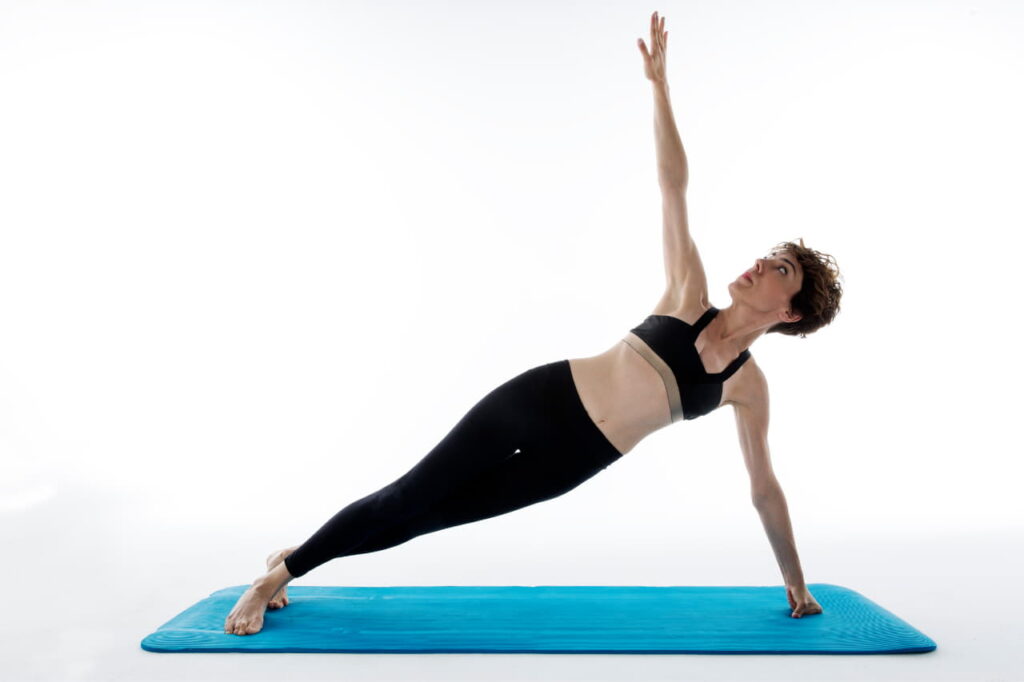
The entire practice of the Ashtanga types of yoga takes about an hour and is done in a heated room with thirty minutes of warm-up exercises and twenty minutes of cool-down exercises.
2. Hatha yoga
Hatha yoga is a branch of yoga philosophy that is typically more focused on physical activity, the individual’s personal practice, and the connection to one’s body. It’s rooted in physical exercises designed to strengthen muscles and stamina, correct postures, and balance body energy. Practising hatha yoga can help improve overall health and wellness by developing a sense of calmness through breathing techniques and meditation.
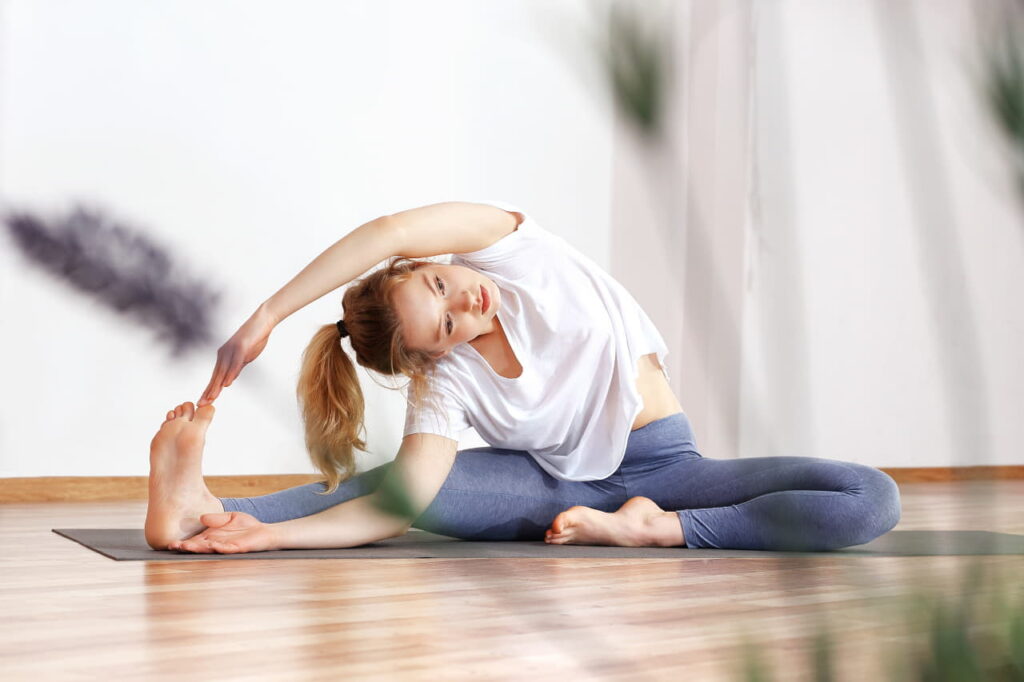
Hatha Yoga has been practised for centuries. Hatha Yoga is derived from the Sanskrit words “ha” which means sun, “tha” meaning moon, and “ya” meaning to control. Roughly translated, it can be understood as “union of mind and body”.
Hatha Yoga is divided into three different styles:
- Hatha Yoga,
- Raja Yoga (which emphasizes meditation), and
- Karma Yoga (which focuses on selfless service).
Hatha yoga has been shown to improve chronic conditions such as high blood pressure and diabetes mellitus type 2.
3. Kundalini Yoga
Kundalini yoga is a form of yoga that focuses on strengthening the spinal cord, stretching the muscles, and stimulating the body’s vital energy centres known as chakras. This type of yoga is known to help stimulate the body’s natural energy, which can be used to promote healing.
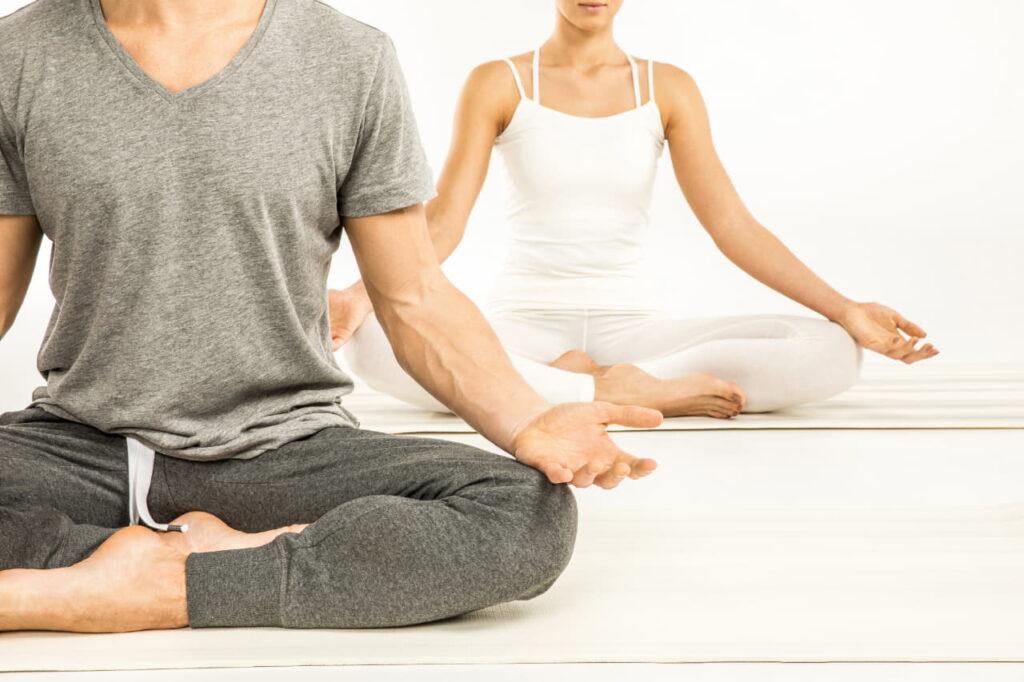
Kundalini Yoga can be practised alone or in a class with others to increase your flexibility and moods.
4. Vinyasa Yoga
Vinyasa Yoga is a practice that originated from India and emphasizes on synchronizing breath with movement. It is a challenging form of yoga that combines postures, meditation, and relaxation techniques with vinyasa, or flowing exercises. Vinyasa means “to place in a special way” or “to put together.
Vinyasa Yoga incorporates a sequence of poses. The poses are usually linked together in a fluid movement from one pose to the next. People practising this type of yoga place an emphasis on synchronizing the breath with an intention for each pose.
5. Iyengar Yoga
Iyengar Yoga is an ancient practice that was developed by B.K.S. Iyengar in the twentieth century to promote health and well-being through postures, breathing, and meditation. It is a form of Hatha Yoga that focuses on creating balance in the body through stretching and holding poses.
This practice is popular for many reasons, but primarily because it’s so easy to modify to fit any person’s needs. One can start by practising their own poses, which are tailored to each individual, or they can practice with the guidance of an experienced instructor.
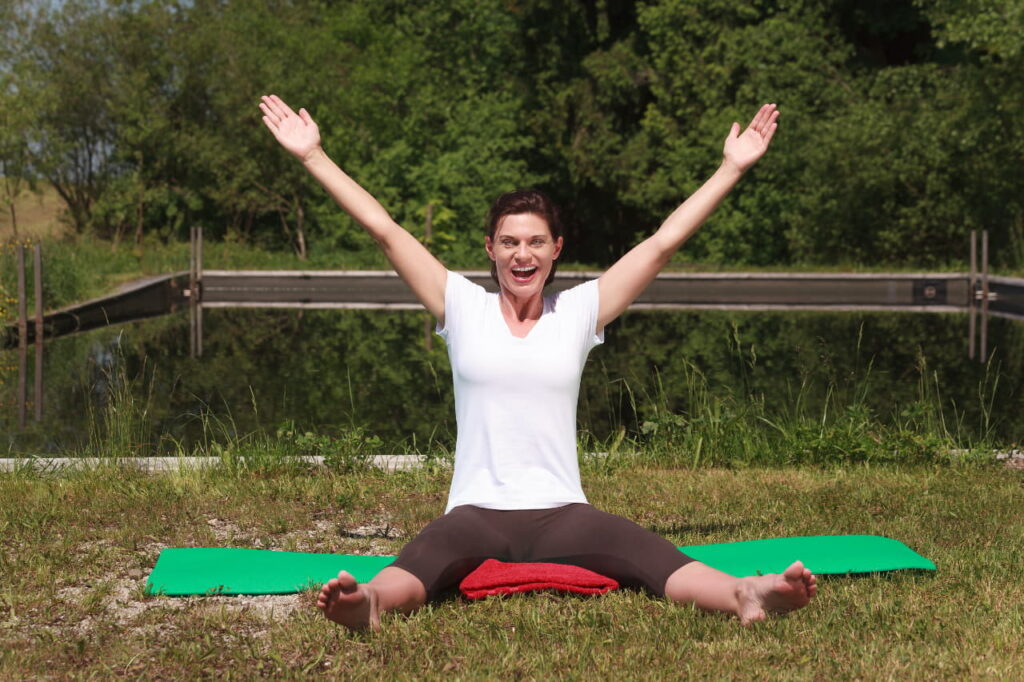
Iyengar yoga has many benefits, including increasing flexibility, stress management, and improving posture. It also helps individuals with chronic back pain develop a healthy spine.
6. Sivananda Yoga
Sivananda Yoga is a system of yoga that promotes health and well-being through a holistic approach. This system is designed to help individuals find their true potential by living in harmony with themselves, one’s environment, and the world.
Sivananda Yoga was created by Swami Vishnudevananda in 1959. He named this form of Yoga after his guru Swami Sivananda who taught it in the 1930s and 40s. You can read about its origins here.
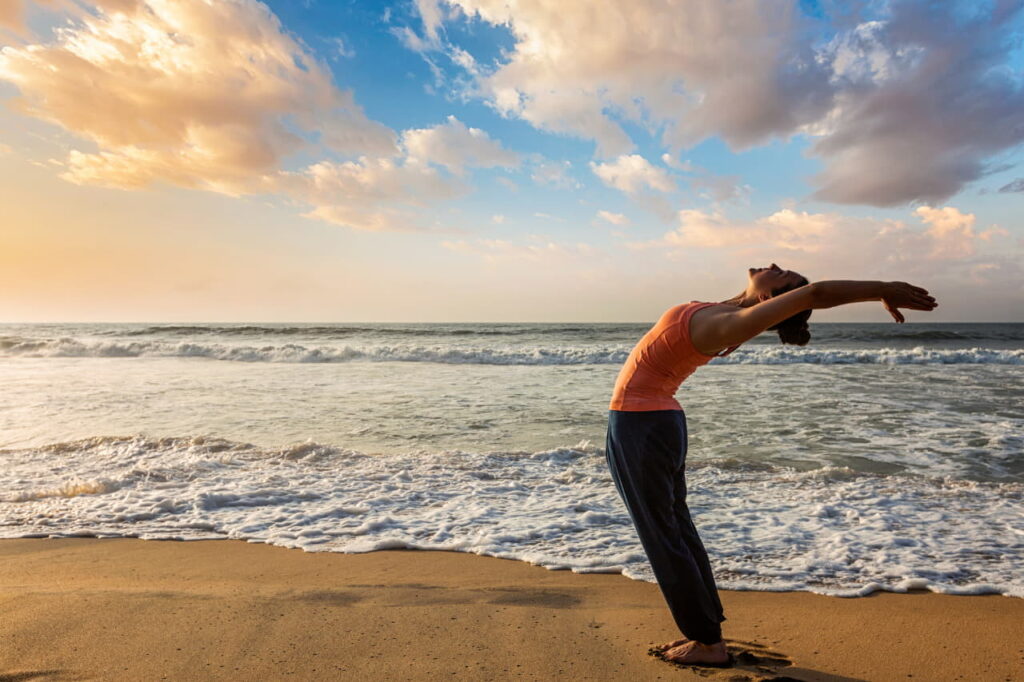
Sivananda yoga has been practised for over 50 years and teaches that free, creative breathing with strong concentration leads to strong life energy and peace. The system is a means of achieving self-realization and self-knowledge, which can bring peace and contentment to those who practice it.
7. Hot Yoga
The proponents of Hot Yoga claim that it strengthens the core, detoxifies the body and helps to prevent injury. The practice has been proven to burn more calories than traditional yoga, but it also poses a greater risk for heatstroke. Yoga enthusiasts should be aware of the potential dangers before they begin this physical activity.
Hot yoga is one of the most popular types of yoga that combines traditional yoga poses with hot temperatures. It is believed that the heat allows for better flexibility and relaxation.
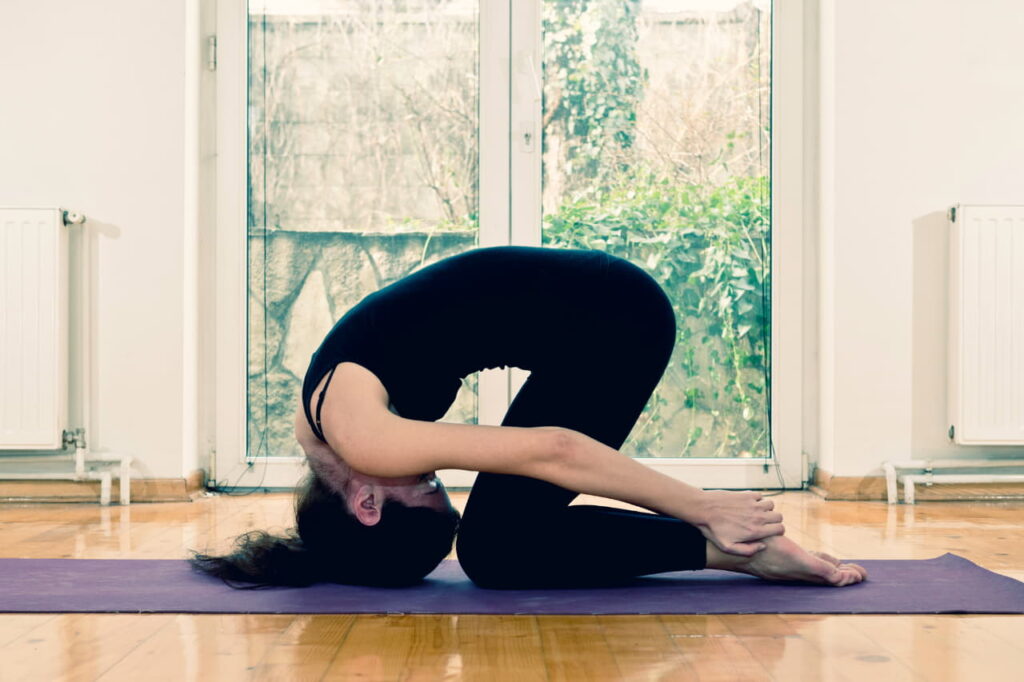
Hot yoga focuses on strenuous stretching and poses in a room heated to 105°F or higher. The heat is thought to allow for better flexibility and relaxation. Participants wear less clothing than traditional yoga, such as shorts and a tank top, so they can stay cool by sweating.
8. Bikram Yoga
Bikram Yoga is a form of hot yoga which consists of 26 poses performed two times each. It also includes two breathing exercises, where students are encouraged to exhale vigorously. It starts with a standing series of exercises, followed by the sitting series. The final series consists of standing and seated poses that challenge balance and concentration.
These exercises are done in a heated room (at 40-105 degrees Fahrenheit) which increases sweat and oxygen levels and is thought to help detoxify the body.
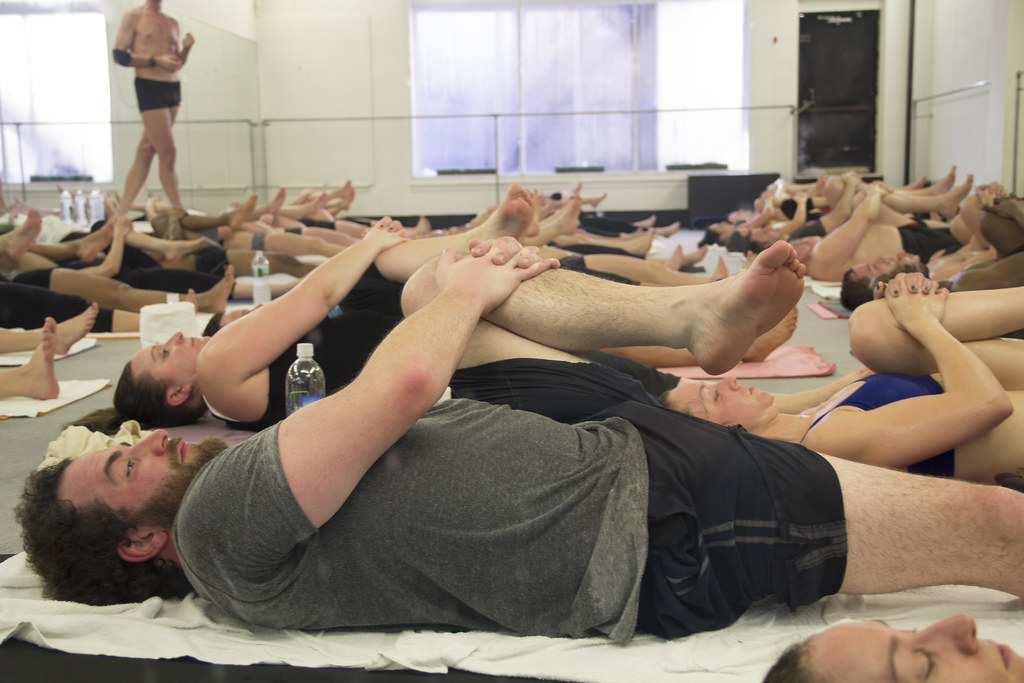
Bikram yoga was created by Bikram Choudhury and its primary goal is to build heat in the body, increase blood circulation, and strengthen the immune system. This form is the most popular in the United States. The classes are led by instructors who guide the students through the poses.
9. Power Yoga
Power Yoga is a strong, challenging form of yoga that involves both physical and mental strength. This Power Yoga is a that combines physical practise with a focus on strength and endurance. It incorporates elements of Hatha Yoga, powerlifting, and aerobics. It is one of the most rigorous types of yoga.
It uses poses that are typically held for three to five minutes, which makes this type of yoga more physically challenging than traditional Hatha Yoga. For example, power yoga can combine a sun salutation sequence with a series of more difficult poses, such as the one-legged warrior pose.

The poses often imitate movements found in martial arts and some athletes have been known to practice them to improve performance. This style of yoga is adapted for those who are generally more fit and want to challenge themselves, while still being able to enjoy the benefits of yoga.
10. Restorative Yoga
Restorative yoga is a practice of yoga that focuses on relaxation and calm. This type of yoga is not practised at high speeds or with forceful movements, but rather slowly and with precise, intentional movement. It can be practised by people of all fitness levels and any age because it’s designed to be accessible to anyone.
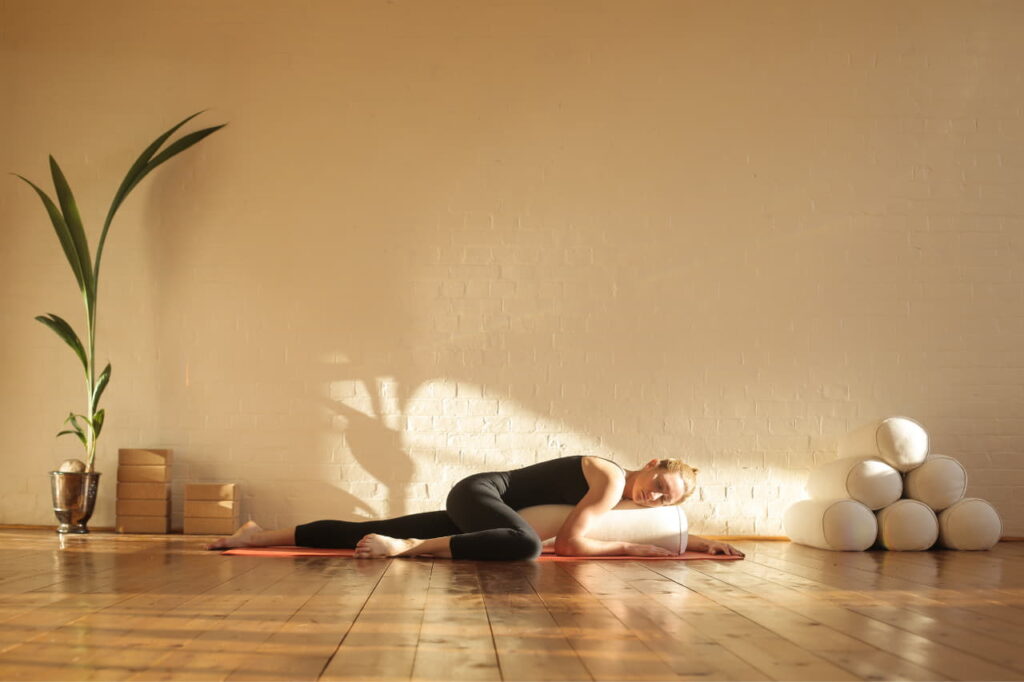
The poses of Restorative Yoga are held for short periods of time, often only five or ten minutes at a time. In this way, it can be done multiple times per day to help with stress management. The goal is to restore your physical, mental, and emotional balance after a long day. Positive effects can be seen with regular practice for as little as 15 minutes a day.
It is an extremely calming form of yoga, but also offers many benefits for practitioners. These include reducing stress, improving sleep, improving digestion, and increasing energy. It is used frequently to de-stress and recover from chronic pain like arthritis or fibromyalgia.
Try Out These Types Of Yoga
Hopefully, you’ve enjoyed learning about the different types of yoga. Yoga combines the benefits of exercise with the relaxation of meditation. It provides a holistic approach to health and wellness that has many physical, mental and spiritual benefits.
Most types of Yoga can be practised by all ages, body types and fitness levels. Whether you are looking to shed a few pounds, get stronger, feel more flexible, relieve stress or just have fun, get ready for a new you. If you want to try something that will help you relax, help with joint pain, increase flexibility, and build strength, go ahead and try out one of the many types of yoga.
If you want to know about other ways of keeping fit, read our article Top Five Wellness And Fitness Tips For Busy People.

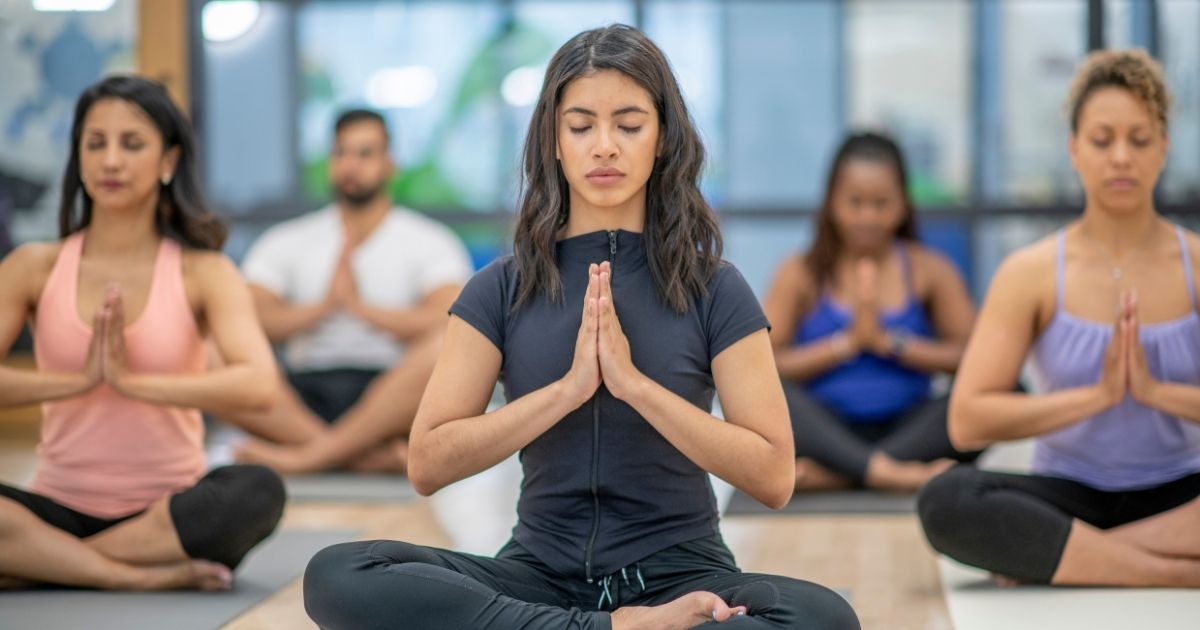








Leave a Reply